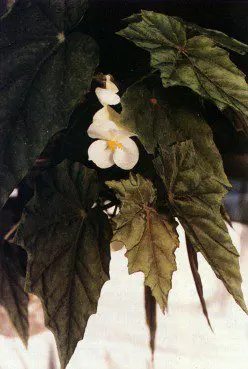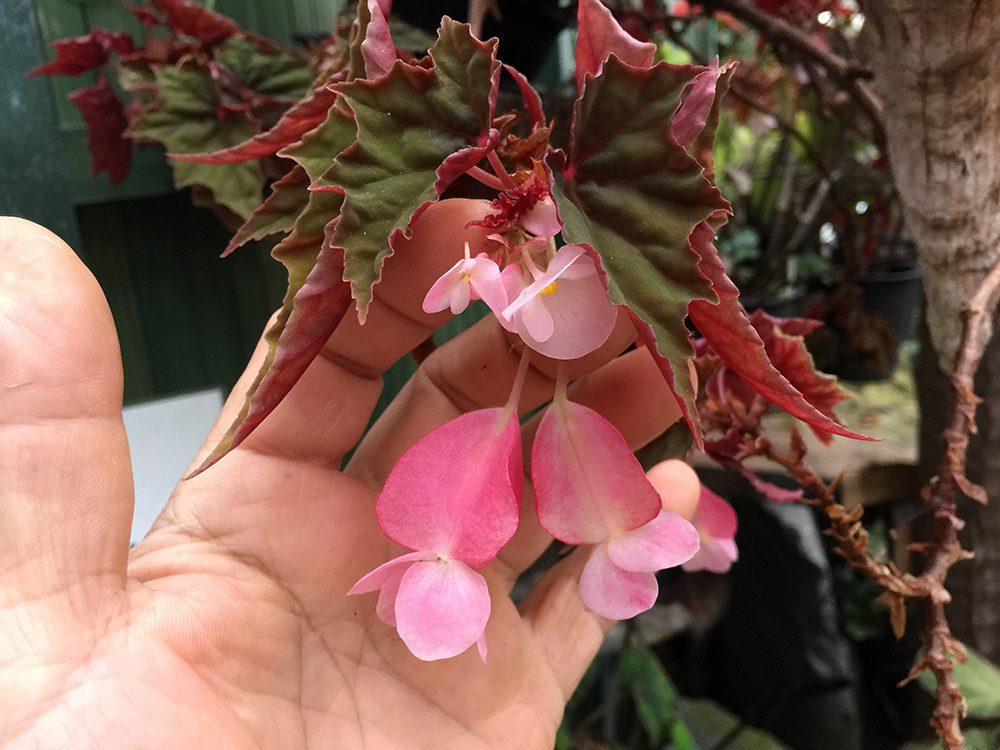This is a pitch for a begonia that is seldom seen or mentioned in the literature. Yet it is a beauty, easy to grow , and easy to reproduce. A cane, its flowers although large are not produced in the overwhelming masses of the more popular canes. This is a modest beauty; it does not shout, “See me!”
B. ‘Lubbergei’ is a cross of B. lubbersii x B. dregei. Its leaves show an interesting blend of the two species. They have a heavier texture than B. dregei, hence are not so subject to mildew. the margins are cut by concave scallops. The upper surfaces are a rather unusual olive-green, with darker veins and a red dot at the sinus. The undersides are red. My largest leaves are about 4″ long; most are smaller. The plant is low-growing, and almost independently shapes itself into a neat small upright bush. The blooms are large and fairly numerous, and are two shades of delicate pink, becoming white if bleached by sun or age.
Not usually finicky about its environment, B. ‘Lubbergei’ will sunburn in hot summer sun. It enjoys being outdoors in good weather under shade of trees, where direct sunlight touches it but does not scorch it. Winters, a sunny spot near a window or in the greenhouse keeps it blooming for a long time. It will lose lower leaves, like all the begonias, if allowed to dry out too severely, but will recover them when care is resumed.
Someday I would like to find it in a show, so that more growers would come to know and enjoy this lovely Japanese hybrid (by Uemura, 1977).




